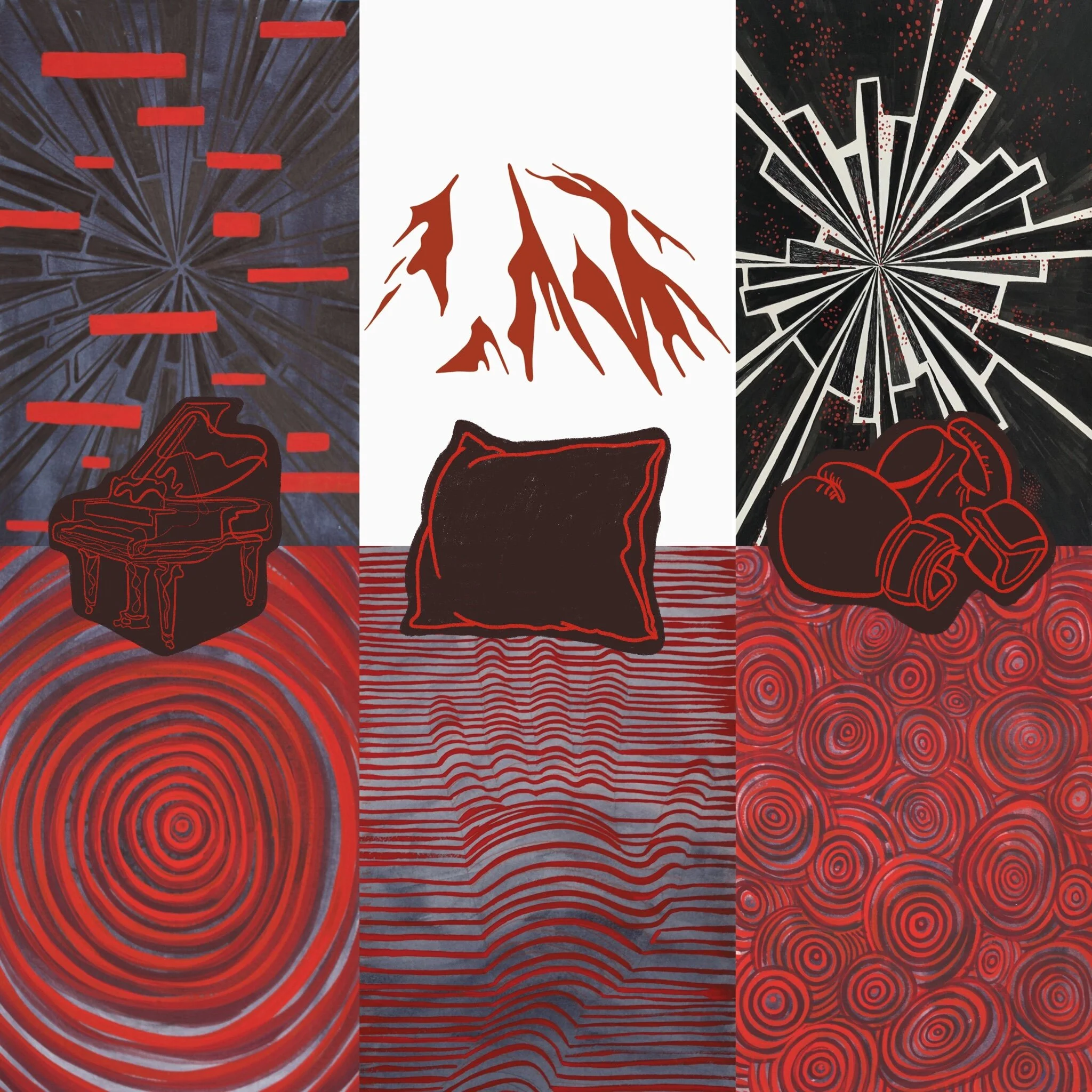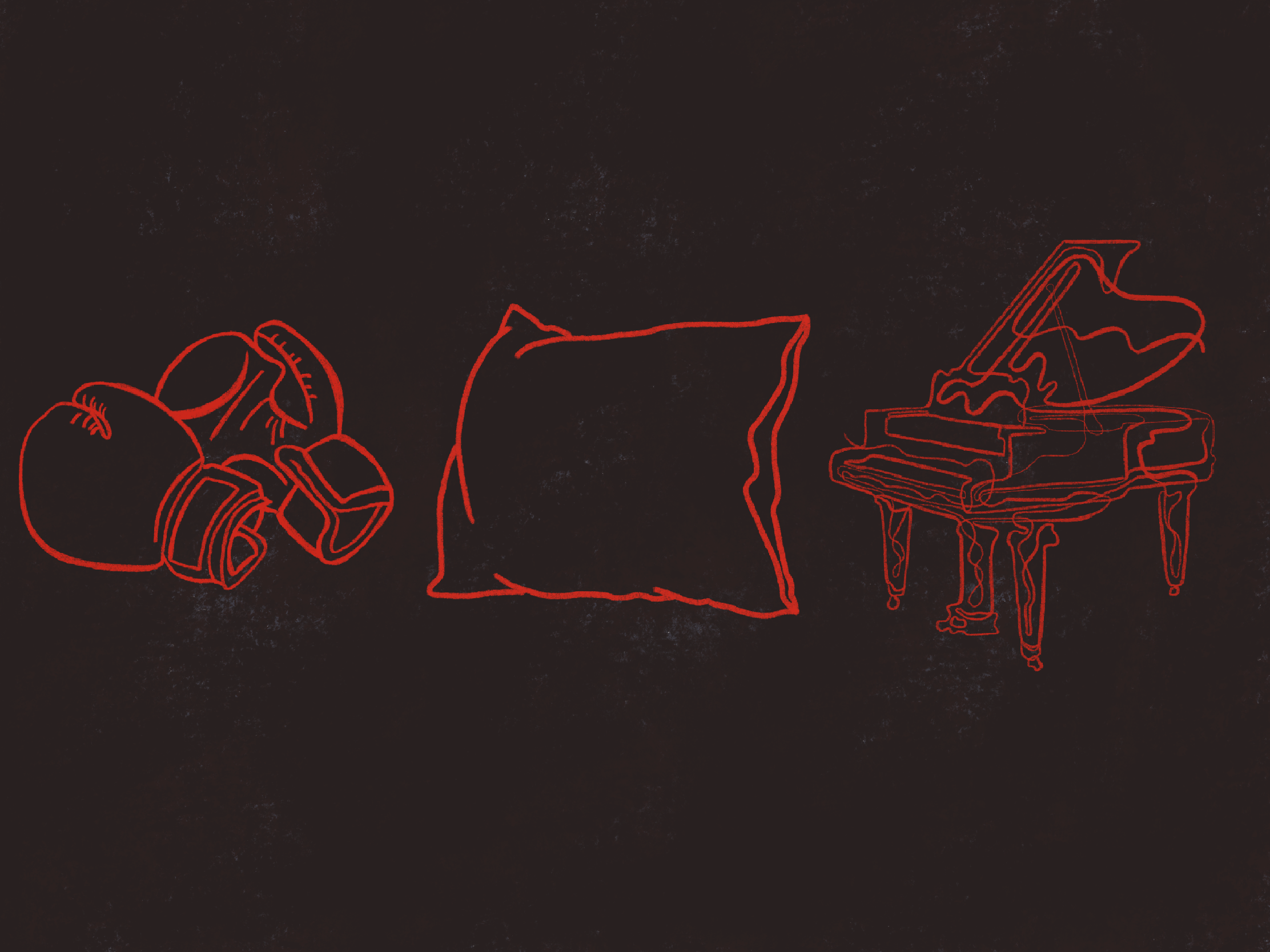Repetition, Ritual, and Rhythm: Boxing and Piano, 2020
A Rumination … What we must know about boxing
First - boxing is seen first as a racialized hyper-masculine exercise in strength
Second -- While male boxing dates back to the 4th century BC, women’s boxing is relatively modern. The first recorded match between two women was is 1876 at New York Hills Theatre where the prize was a silver butter dish. In 2012, Women’s boxing became an Olympic event for the first time since the games began. This marked the institutional recognition of women in the sport and helped generate excitement surrounding boxing as a form of exercise.
Third - boxing is a practice of learning through repetition, first, you focus on your stance, keeping your hands up by your face, elbows tight, knees slightly bent, and body turned sideways, focus on rotating your feet with each punch, focus not just on your arms but using the strength of your whole body to power a punch
Fourth- after you have overthought all the details, boxing becomes a rhythm, catch left 6-3-2, catch right 5-3-2, catch left 6-5-3-2, methodology, 6-3-2, 5-3-2, under 2-3-2
Fifth - boxing is an act of hand-eye coordination, thinking quickly, in response, in defense
Sixth - boxing is similar to playing piano in that you refine through repetition when throwing boxing combination, there is a complete absorption into the combination that creates the space for softness and meditation, you are teaching yourself another way to use your hands
Boxing is Repetition, Rhythm, and Ritual
To wrap your hands you fold the hand wrap three times over your fingers, place that on your knuckles wrap once around your hand, over and under your thumb, through each of your fingers, around your wrists, and in a figure-eight motion until you have reached the end of the wrap, then you repeat that on your other hand. Next, you put the gloves on. I hold down the wrist section with one hand and pull the velcro tightly with my teeth, so my hand does not wiggle in the glove. After you have your wraps and gloves on, you are ready to get into your boxing stance. If you are right-handed, your right foot should be in front, and your left foot should be behind slightly your legs in a wide stance with a slight bend in your knees. You should be facing the side with the lower part of your body, but you should be primarily facing forward. Your hands should be up by your face, and your elbows should be tight by your side. Bounce back and forth lightly, and you are in your boxing stance. We are going to do a catch body counter combination. You want to catch the punch with your left hand; this means you move your left hand up your face. This is a small movement, much smaller than you think. Your hand needs to stay on your face because if it is out, then your opponent can punch you with the space between your hand and your face. Catch the punch then cross, left-hook, cross. Return your hands to your face, catch the punch with a slip to your right side, you bend slightly to your right, another movement that feels huge but is small and tight, then right uppercut, cross, left-hook. Then you do the same thing on the opposite side, catch with your left hand, bend slightly to the left while keeping your hands on your face, then cross, left hook, cross. The last section, after that cross, bring your hand back to your face to catch the punch then left uppercut, left hook, cross. The combination, catch 2-3-2, catch 6-3-2, catch 5-3-2, catch 2-3-2. You are ultimately striving for flow and rhythm once you understand how to throw the combination.
I did not grow up playing sports; instead, I grew up playing the piano. Not casually, I practiced every day for hours to refine a few minutes of a performance. I arrived at boxing at the end of my senior year in high school as an experiment in habit formation, movement, and something that was the opposite of my personality. I returned to boxing as a productive coping mechanism and a step towards healing my mind through movement. It has become almost a daily ritual that needs to happen. While there is often chaotic masculine energy in the boxing gym, I find there is a softness in boxing as a meditative practice, which allows me to only focus on the combination and repetition. The boxing gym is a simple space where I am not working towards understanding or mastery of anything. There is a freedom of play where I am not tied to any goal of impossible perfection. It is a light space of joy. Boxing forces me to be in my body in the opposite of my default. I need to take up space, react, think quickly with confidence, only focus on the present, and feel being in my body.
What does nothingness as fullness feel like? Kata is a Japanese word that literally translates to form. In material arts, kata means a series of movements you master. In Japan, learning material arts is about learning kata, and you gain a fluidity when you master the movement. There is a right way to do things; this is a way to make the chaotic world meaningful. For martial arts, there is thoughtlessness in mastery that keeps you below the line. In boxing, you are trying to achieve a snap to your punch, creating a precise and fluid movement that engages your whole body to power a punch. This snap is a form of kata. I have only been boxing for two years, and I am not training to fight someone in a ring, I am training for kata, for the snap in the punch, for mastery of movement that allows a state of expansive nothingness.
Boxing is softness, meditation through repetition. Boxing is a new movement towards complete physical exhaustion. Boxing is about kata, a series of movements you master, allowing for a space of expansive play.





